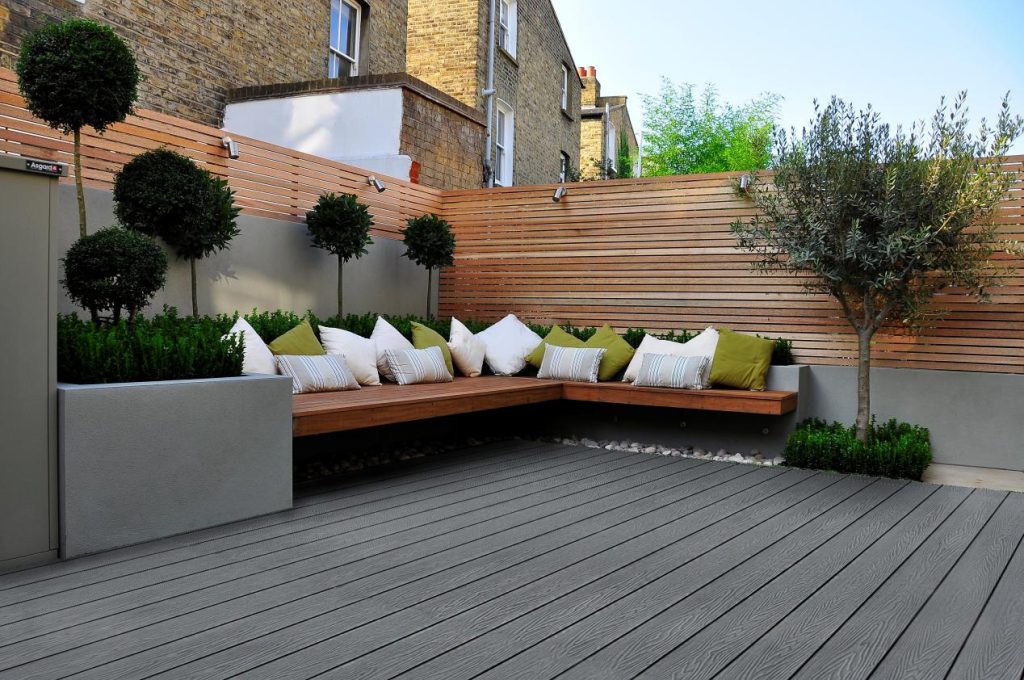✎ The most innovative interior design thinking at home and abroad
Explore new things and new methods of interior design, generate design creativity, and boost the design power of Chinese youth.
Highlights of this issue: Wood-plastic materials Estimated reading time: 6 minutes
Hello everyone, I am your super cute Jiajia girl~
Wood-plastic material is a new type of environmentally friendly material that can be used as floors, wall panels, fences, etc. It is widely used in outdoor courtyards, landscape gardens, parks, commercial places, etc., and is closely related to our lives.
Today’s article focuses on the following aspects:
- What is wood plastic?
- Characteristics of wood plastic
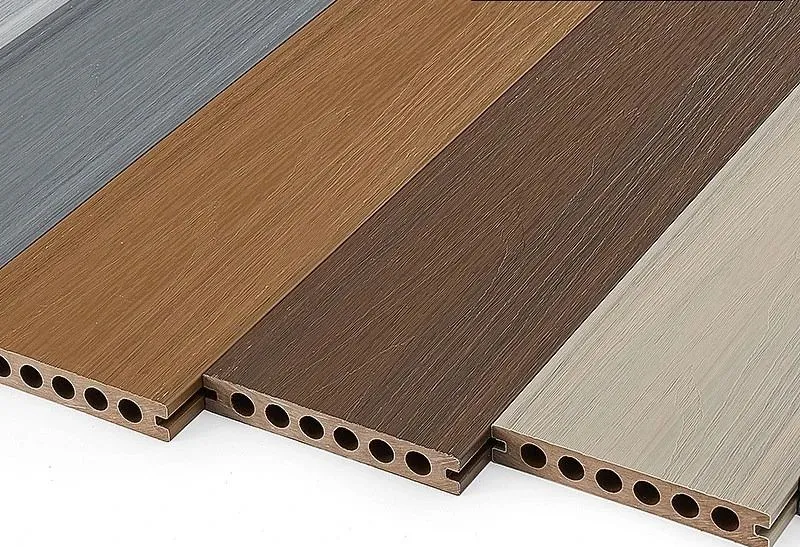
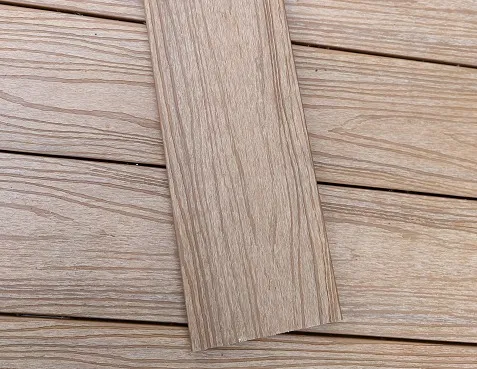
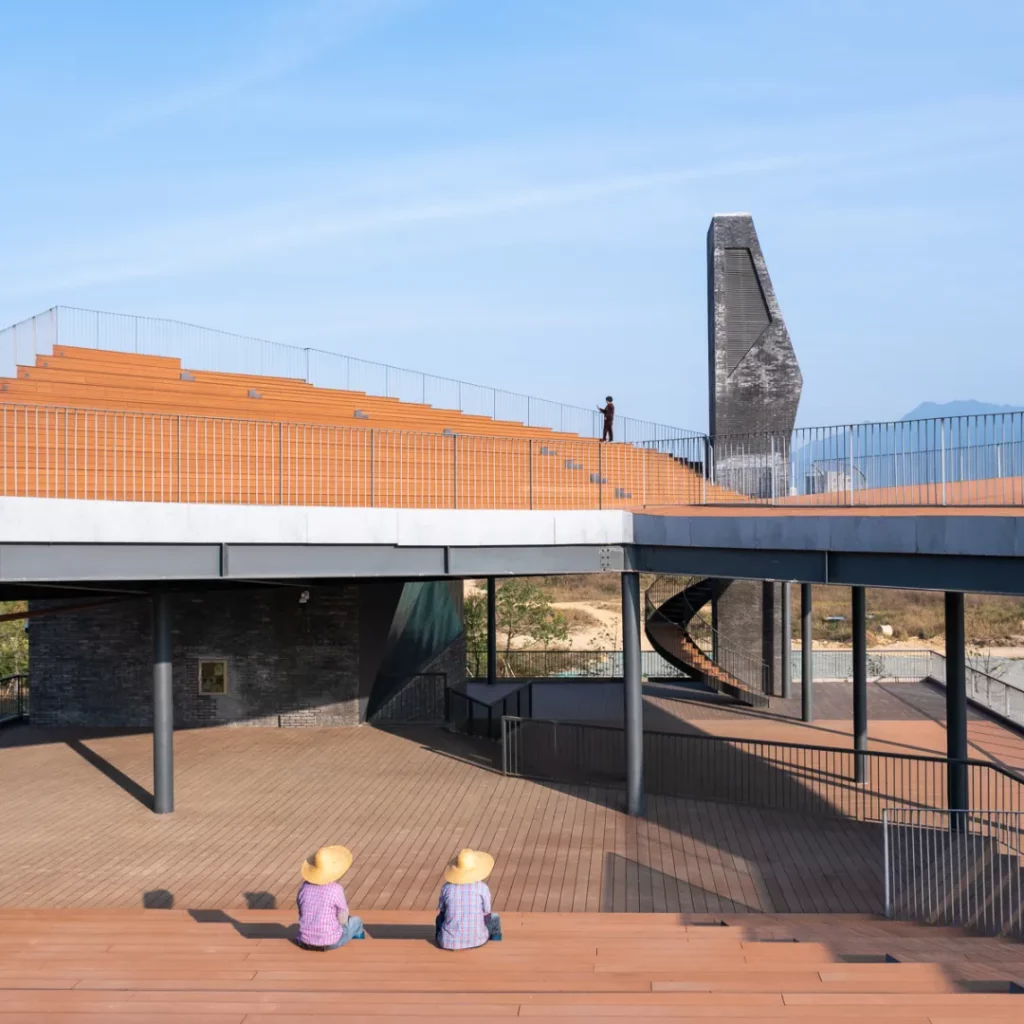
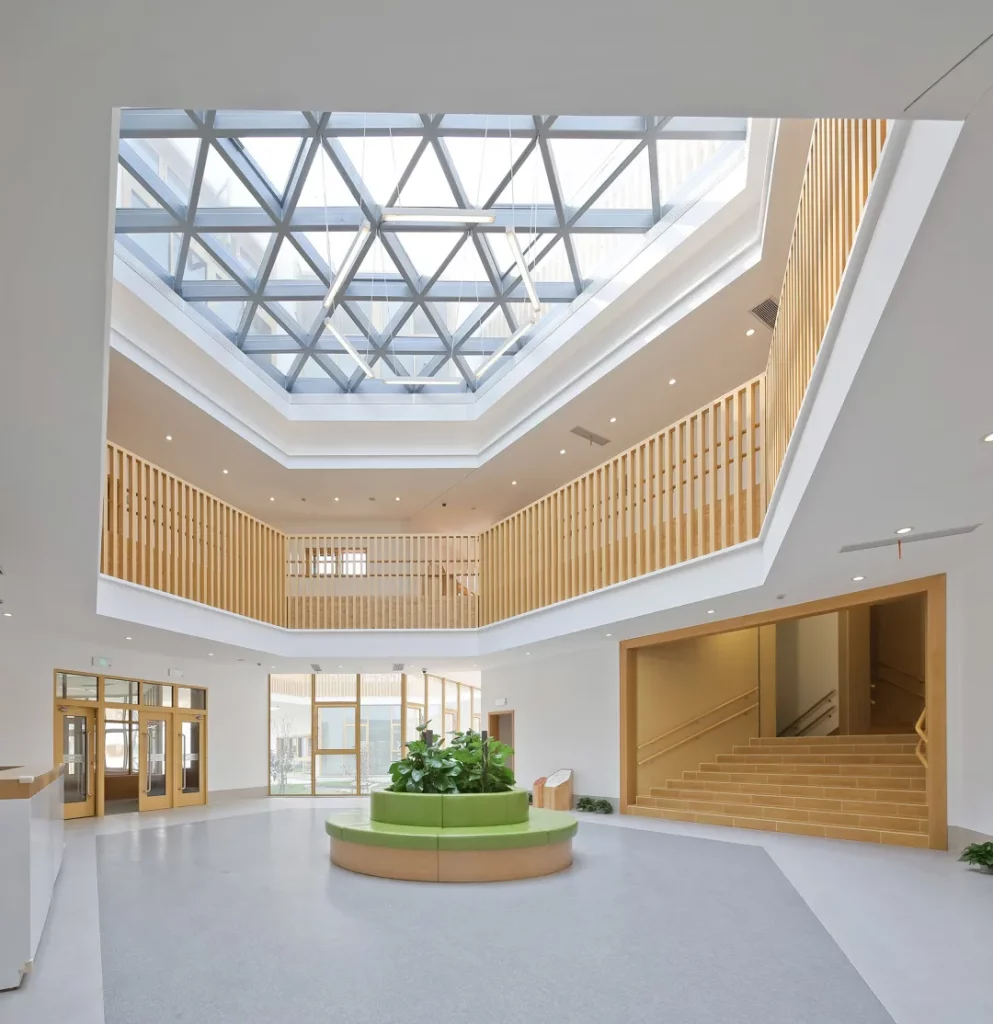
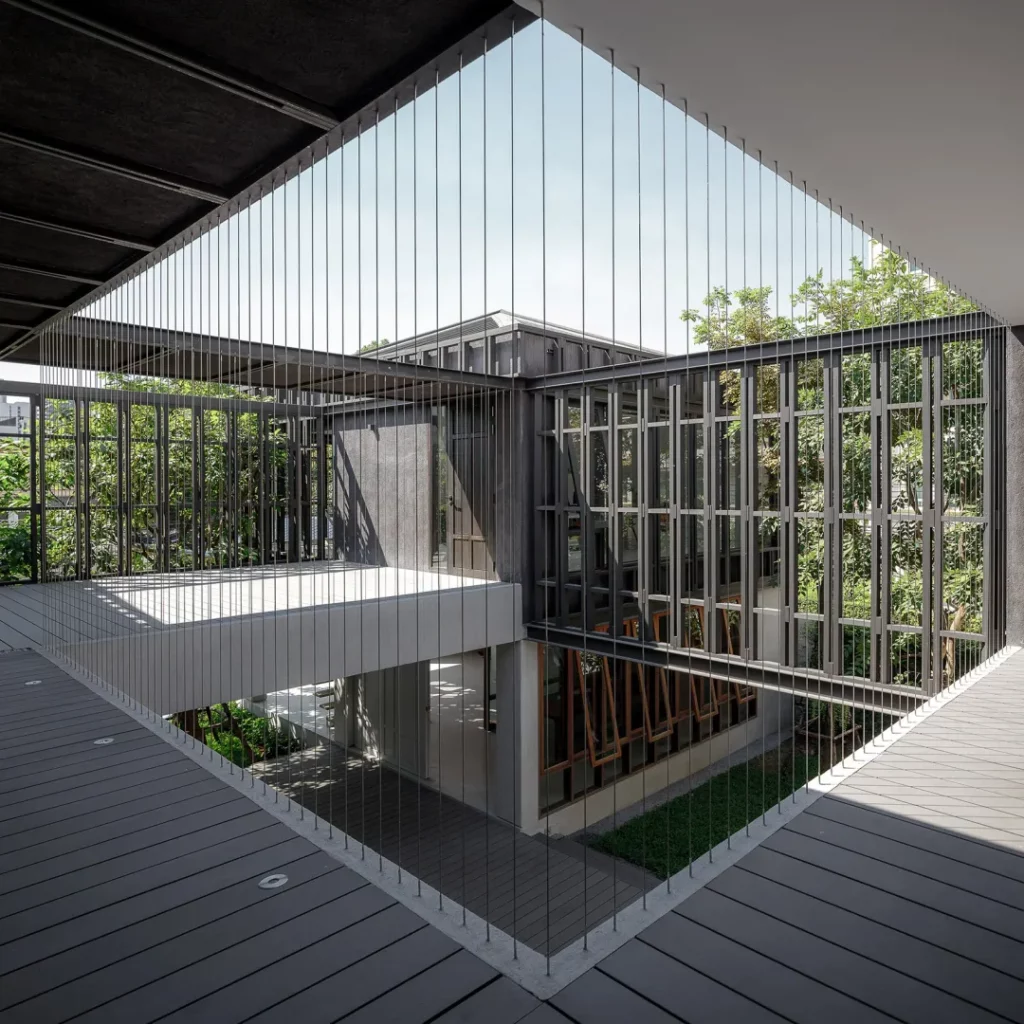
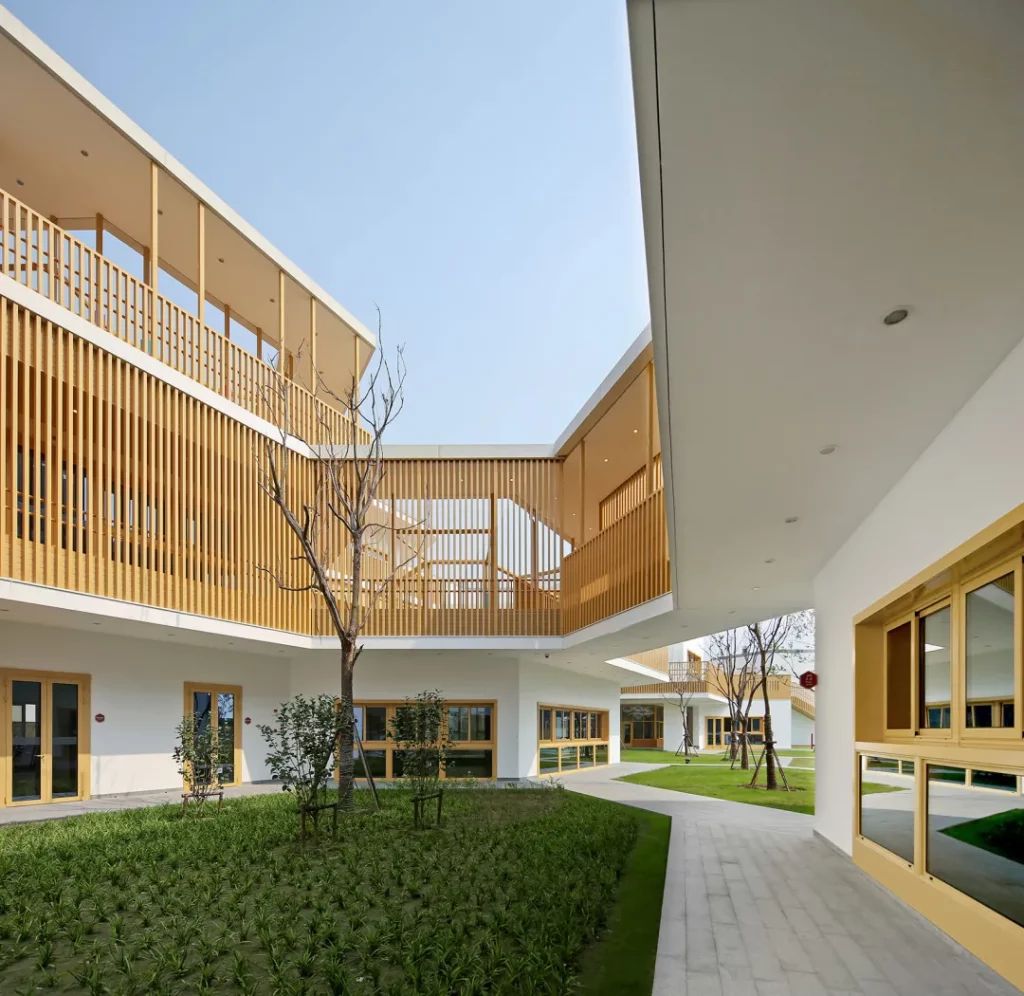
- Types of wood plastic
4.Wood plastic craftsmanship - Application cases of wood plastic
01
“What is wood plastic?”
Wood-Plastic Composites (WPC) is a new type of composite material that has been booming at home and abroad in recent years. It refers to the use of polyethylene, polypropylene, polyvinyl chloride, etc. to replace the usual resin adhesives. More than 35%-70% of waste plant fibers such as wood powder, rice husks, and straw are mixed into new wood materials, and then processed through extrusion, molding, injection molding and other plastic processing techniques to produce plates or profiles.
Currently it is mainly used in building materials, furniture, logistics packaging and other industries. A board that is hot-extruded after mixing plastic and wood powder in a certain proportion is called an extruded wood-plastic composite board.
02
“Characteristics of wood plastic”
The basis of wood-plastic composite materials is high-density polyethylene and wood fiber, which determines that it has certain characteristics of plastic and wood. - Good processing performance
2.Good strength performance - Water-resistant and corrosion-resistant, with long service life
- Excellent adjustable performance
- UV light stability and good colorability
- Can be 100% recycled and reproduced
- Wide sources of raw materials
- Can be made into any shape and size
03
“Types of wood plastic”
1) PE wood plastic
advantage:
PE wood-plastic materials have excellent waterproof and anti-corrosion properties, high hardness, and are easily deformed and buckled when heated, but the effect is better with thickened or porous hollow structures.
shortcoming: - The product has a limited lifespan for outdoor use; it is currently used for 3-5 years;
- It has poor anti-oxidation and anti-photolysis capabilities. Even if antioxidants and UV absorbers are added, the effect is not ideal, and it will also affect the product strength and color fastness;
- The appearance of the product is pure in color, has no wood texture, and has poor appearance.
2) PVC wood plastic
advantage: - PVC wood-plastic products can be made of new materials or old materials (the cost of PE made of new materials is too high, and the product cannot enter the market). It is also easier to modify. The amount of supplement depends on the quality of the product. Depends;
- PVC can be made into low-foaming wood-plastic products, which have lower costs. If you think it is appropriate, you can use co-extrusion (double-material multi-material co-extrusion or steel-plastic co-extrusion), which has good strength and wood grain feel;
- PVC can be processed twice, with various surface decorations or paint including UV paint. The product looks good and has good color fastness;
- The waterproof and anti-corrosion properties of PVC wood-plastic products are also excellent.
3) The difference between PE wood plastic and PVC wood plastic - Different manufacturing methods: The preparation of PE wood-plastic products mainly adopts the cold pushing method; the preparation of PVC wood-plastic products can be divided into vacuum forming, cold pushing method and three-roller suppression.
- Different raw materials: The materials of PE wood plastic are mainly second- and third-level PE recycled materials plus wood powder, calcium powder and a small amount of modifiers. The materials used to make PVC wood plastics are mainly PVC resin powder, PVC recycled materials, wood powder, stone powder and some modifiers, etc.
- Different properties: PE wood-plastic products are heavy, hard, brittle, and have large creep. PVC wood-plastic products are light in weight, have poor hardness, good toughness, and have creep, which is not as large as that of PE wood-plastic products.
PE wood plastic products are mainly used for outdoor garden construction, including green wood such as guardrails, floors, trash cans, flower ponds, pallets, etc. PVC wood-plastic products are mainly indoor decorative materials, such as doors, floors, skirtings, door covers, etc.
In addition, there is a better category of wood-plastic materials – ABS wood-plastic. ABS wood-plastic products are easy to process and have good strength. They can also be made into wood grain effects, which are beautiful and not easy to be damaged.
04
“The Craftsmanship of Wood Plastic”
With the research and development of wood-plastic composite materials, in addition to high-density polyethylene or polypropylene, the plastic raw materials for producing wood-plastic composite materials include polyvinyl chloride and PS. The process has also developed from the earliest single-screw extruder to the second-generation conical twin-screw extruder, and then to the preliminary granulation by the parallel twin-screw extruder, and then the conical screw extrusion molding, which can make up for the difficulty in plasticization. , poor aging resistance, poor creep resistance, poor color consistency and durability, and poor tensile strength, etc.
Wood plastic installation process:
05
“Applications”
01.Second Generation House No. 11
Location: Bangkok / Design: Beautbureau
The black grille facade is composed of prefabricated wood-plastic composite panels. Its production refers to the wooden boards on the walls of traditional Thai houses. The pattern is abstract, the color is simple and thick, and it also shows the beauty of different eras.
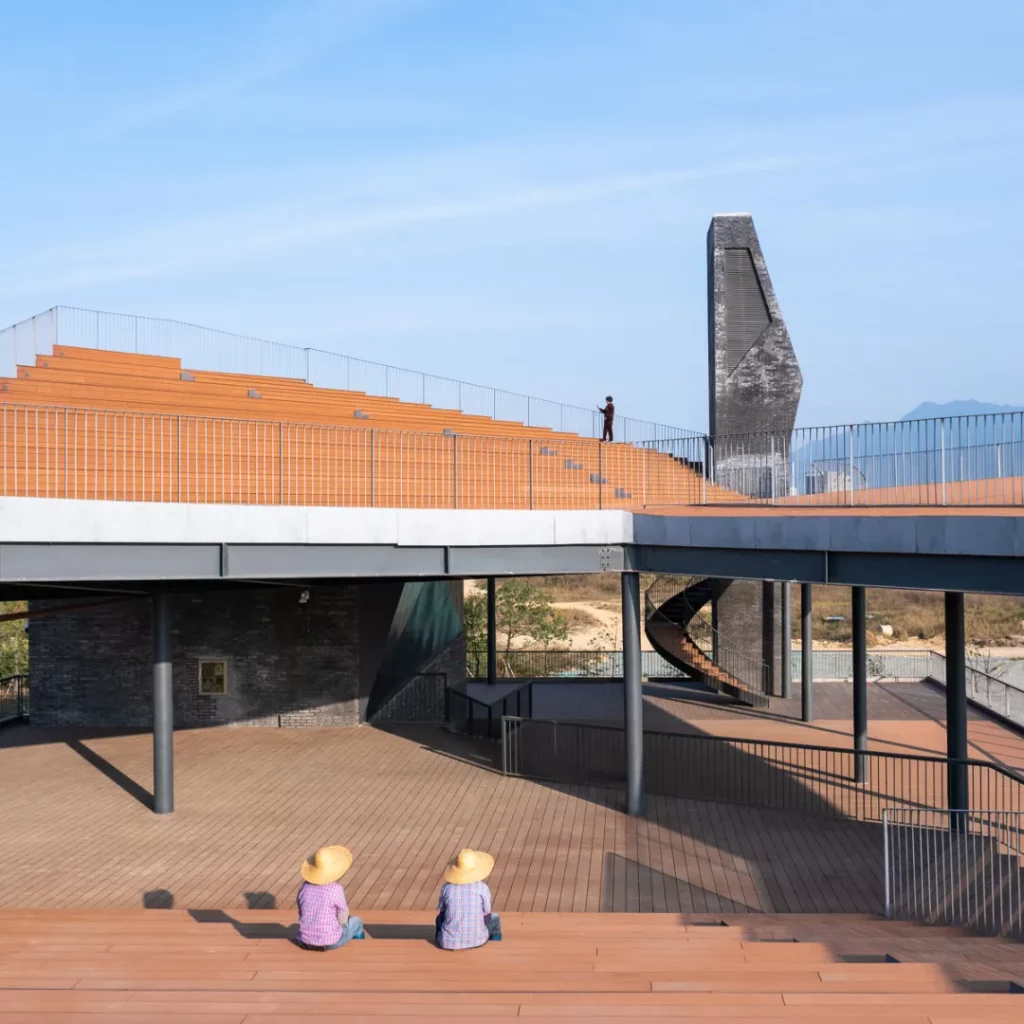
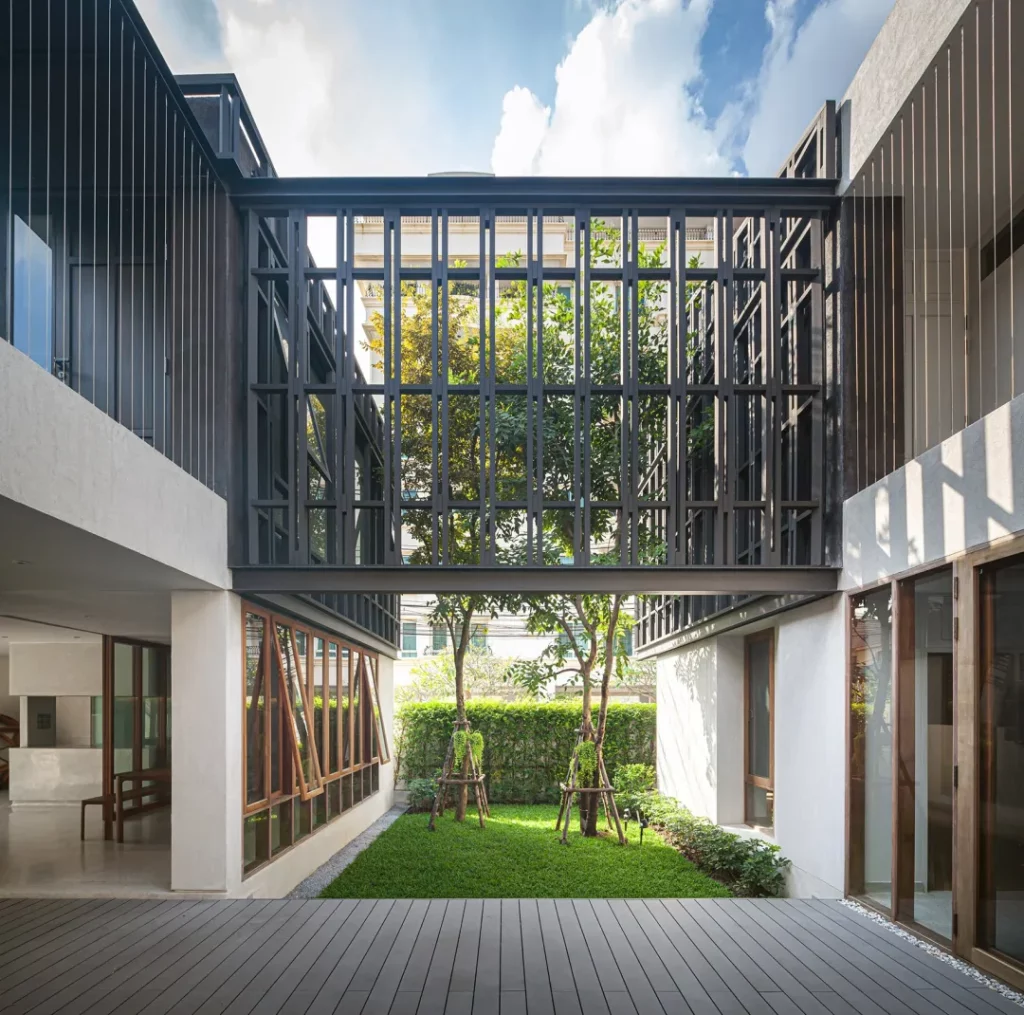
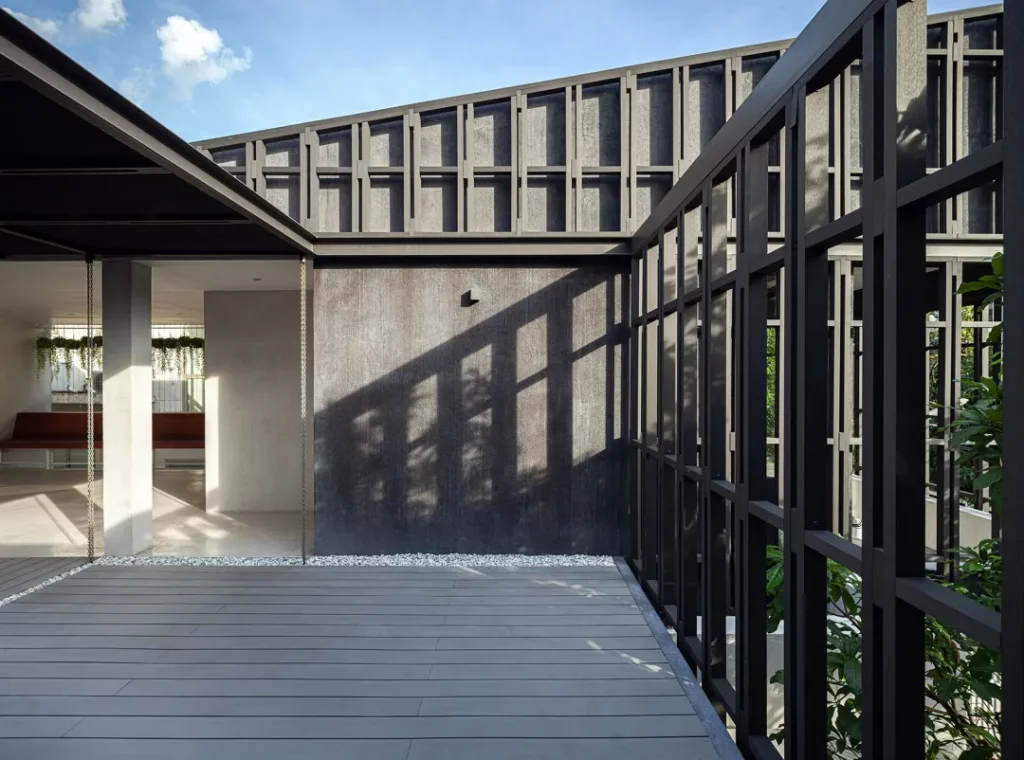
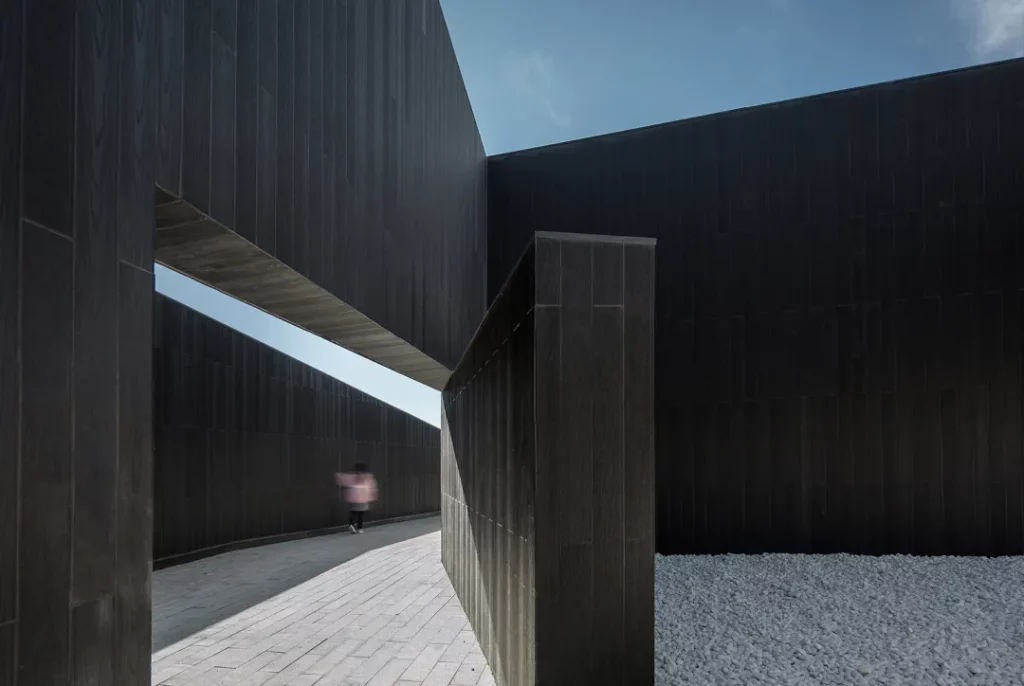
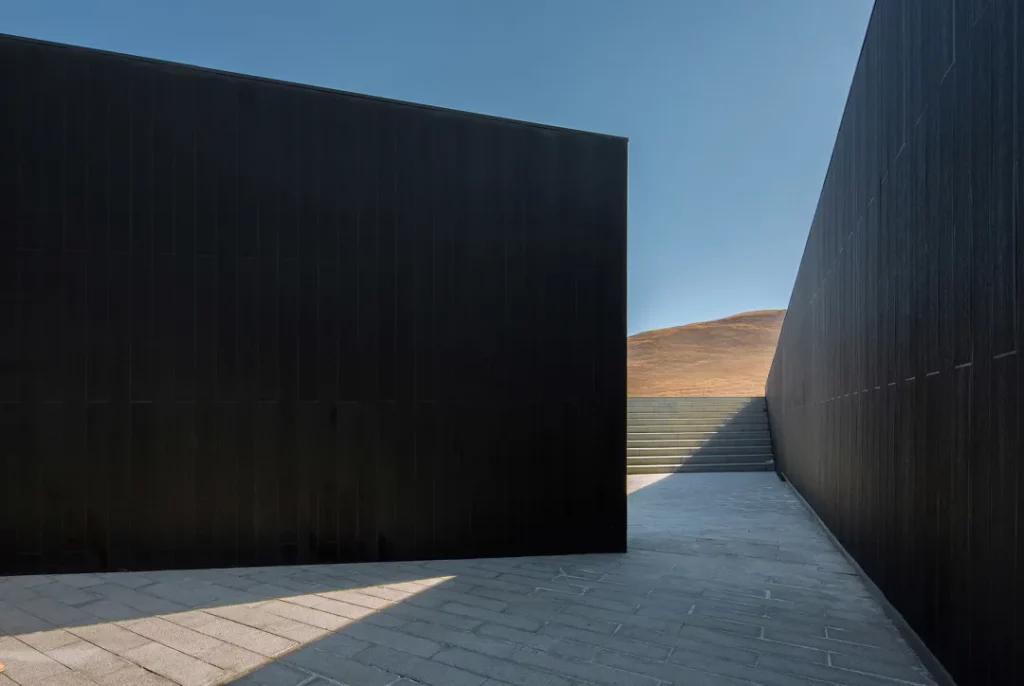
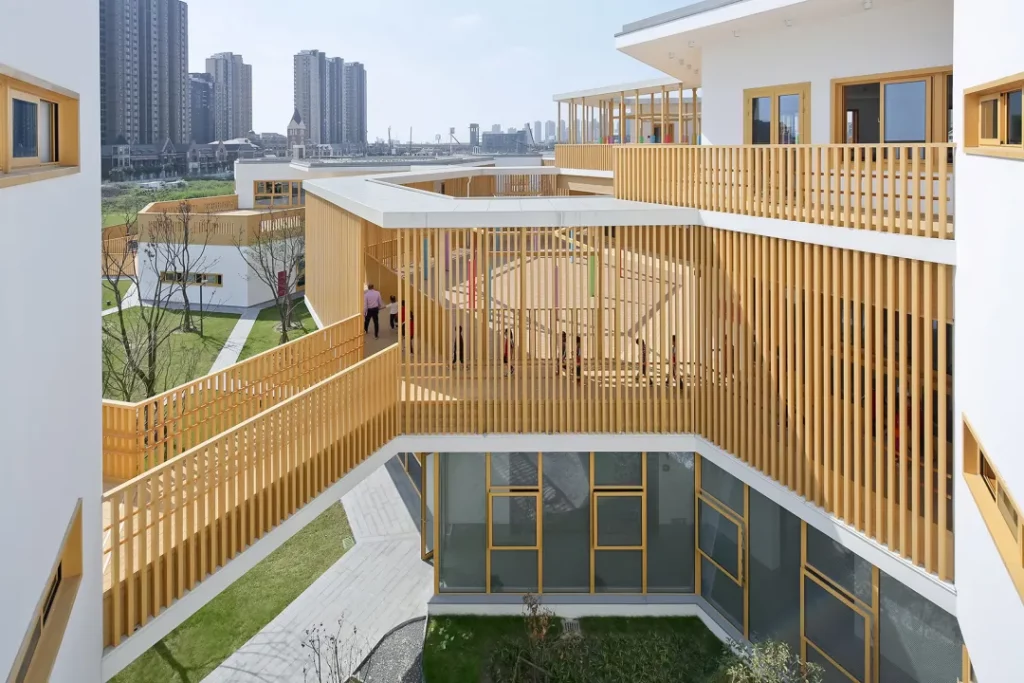
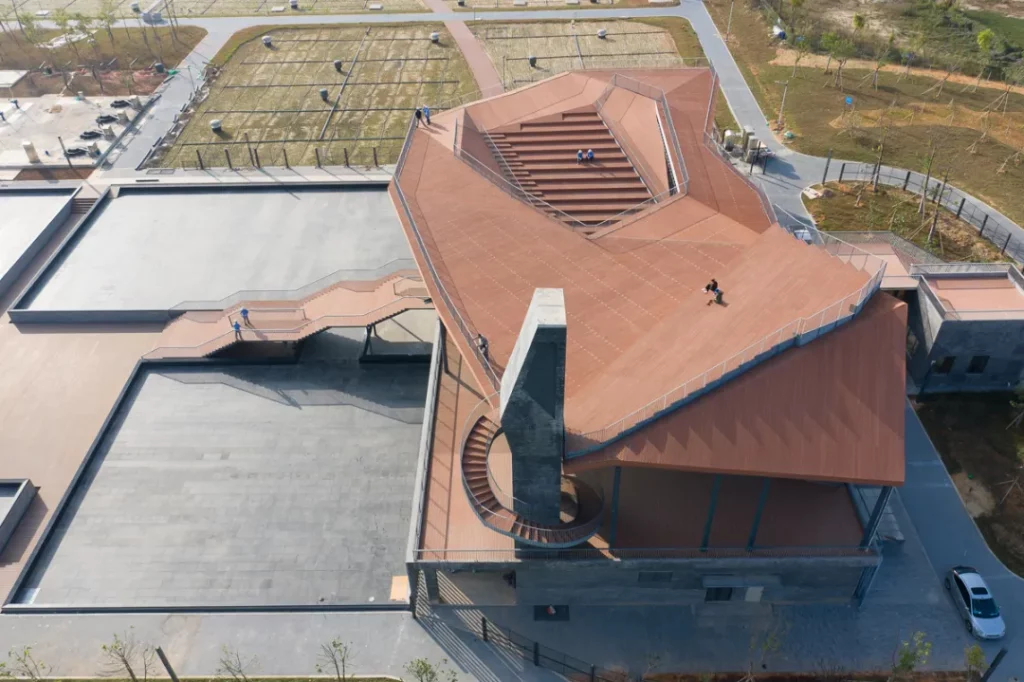
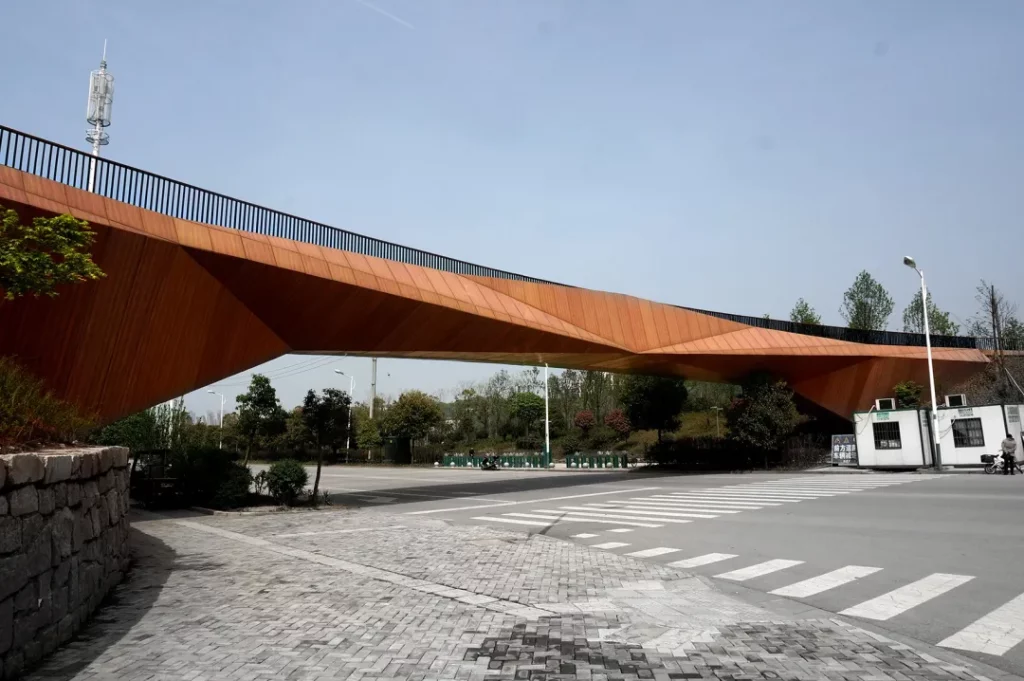
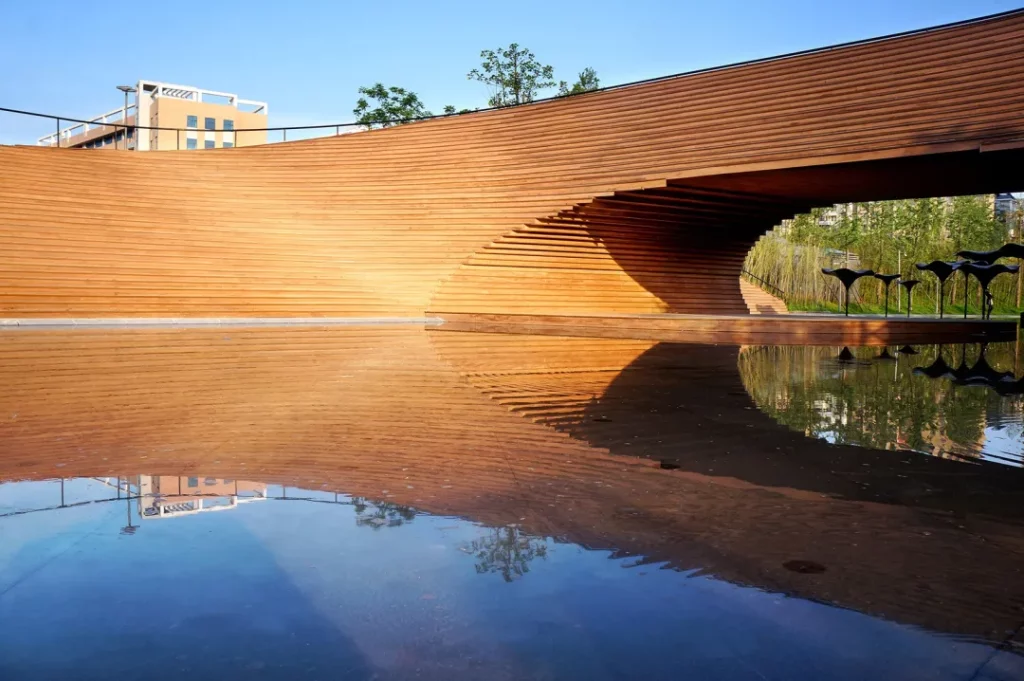
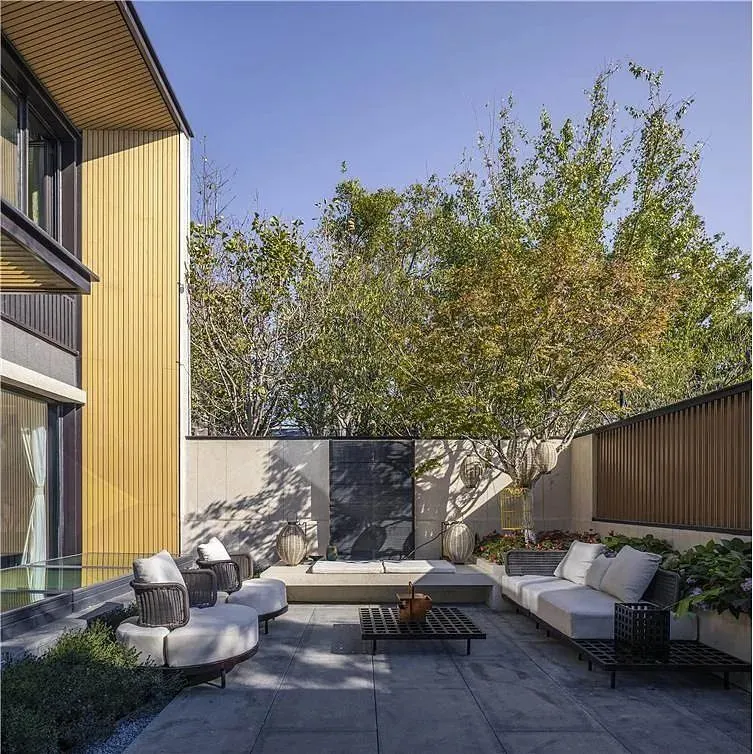
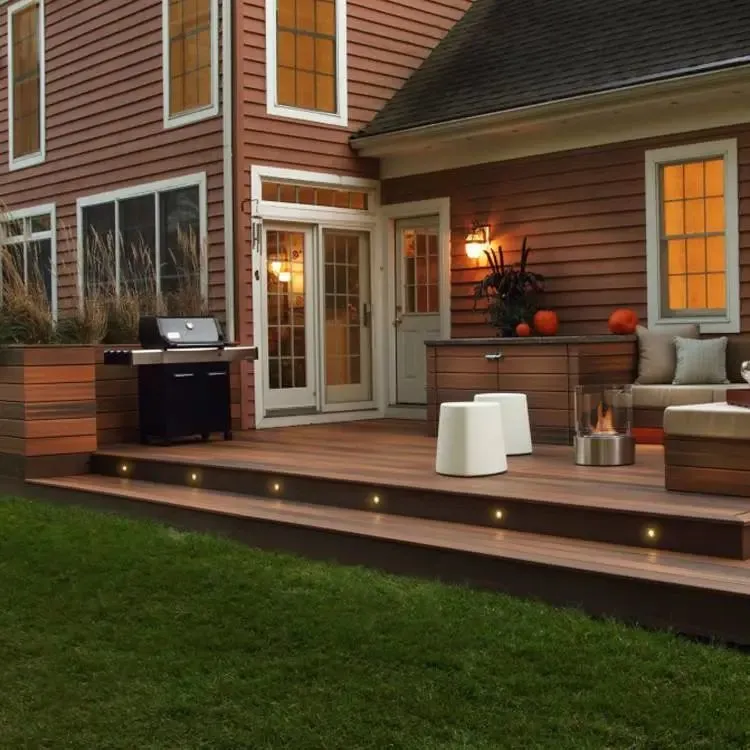
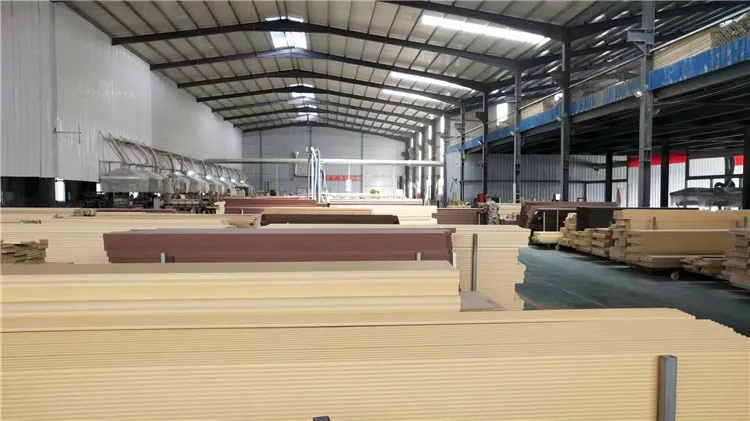
- Pingshan balcony
Location: Shenzhen / Design: Nansha Original Architectural Design Studio
The wood-plastic structural layer uses vertical and horizontal keel frames to form an overhead layer with the structural surface of the steel structure: the main keel conforms to the drainage direction of the folded surface, and the wood-plastic surface layer covers the structural layer, leaving gaps for drainage to the overhead layer. At the same time, it is combined with safety guardrails to form Clean, simple and beautiful unified finish. - When the Xiongyang Bajing Walker·Black Tent
Location: Tibet / Design: PURE Architecture
The main building material of the project uses black wood-plastic panels, creating a quiet space atmosphere. - Bilingual Kindergarten Affiliated to East China Normal University in Shanghai
Location: Shanghai / Design: Shanshuixiu Architects
The wood-plastic structure connects the corridors of different spaces, giving people a warm feeling. - Landscape planning and design of Muyu Lake Park in Xiangtan, Hunan
Location: Xiangtan, Hunan/ Design: Taihe Design
Thick plastic wood panels are used to make the facade decoration part of the bridge body and the facade of the step seats.
Okay, I’ve introduced you to the relevant knowledge about wood plastics. What else do you want to learn? Please leave a message below~


